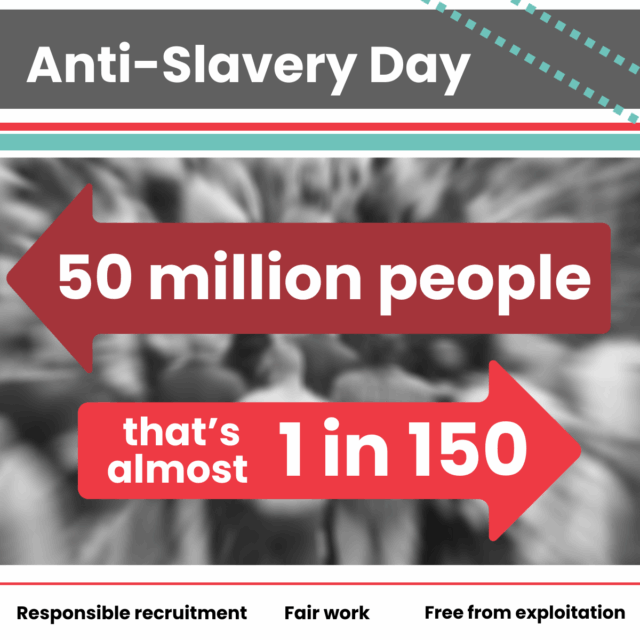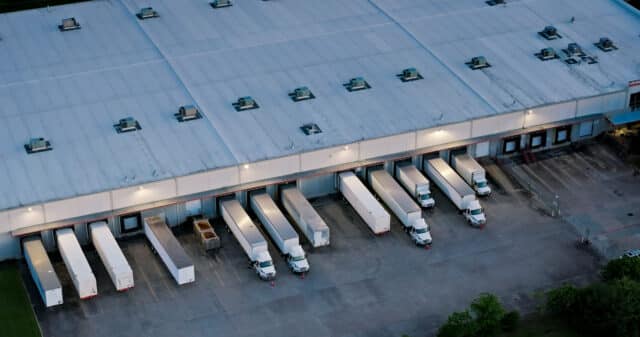
Unless you’ve been living on another planet, you’ll have noticed that the UK, and indeed most countries around the world, have seen a significant decrease in the use of cash to pay for things in recent years, with a huge shift towards digital transactions.
In fact, as of 2022, only around 14% of all payments in this country are made using cash. Debit cards have overtaken cash as the most frequently used payment method, closely followed by contactless payments and mobile wallets, and online transactions through e-commerce sites.
But how have we moved to a cashless society? What are the pros and cons of a cashless society? And are there any dangers involved in moving to a cashless society?
Some of the reasons behind this move to a cashless society are fairly obvious, as people start to see the benefits of going cashless.
Speed and convenience are chief among these reasons. Digital payments offer a faster and easier way to pay for goods and services compared to cash. No fumbling around for notes or coins, no waiting for change, no needless interactions – just tap and be on your way.
Contactless payments and mobile wallets have further enhanced this convenience.
Another fairly obvious reason for cash transactions being on the way out is security. Many people see digital payments as more secure than carrying cash, which can be lost or stolen.
If you have cash stolen, or lose it, that’s it – it’s gone. It’s not like you can trace it. If you lose a debit card or your phone, you can have them blocked, to stop any transactions being made, and fraudulent transactions are usually covered by your bank.
And online transactions are usually covered too, such as credit card transactions or payments through platforms such as PayPal, who guarantee a refund if you’re duped or defrauded in any way.
The rise of online shopping has also fuelled the use of digital payments, as cash isn’t a viable option for these transactions. You can’t exactly slot a £50 into your laptop.
Pretty much anything you could get on the high street, you can now get online; food, clothing, holidays, electrical goods, furniture, and so on. And all of these e-commerce sites give guarantees in terms of the quality of the items you’ll receive and when you’ll receive them.
Yet another reason for the shift towards a cashless economy is the COVID-19 Pandemic. During this period, which we’d all rather forget, there were obvious concerns over hygiene (particularly with those hand-washing instructions ringing in our ears), and money, which had long been seen as a bit dirty, made way for more contactless interactions.
And the Government has seen the direction in which things are heading and has taken steps to encourage cashless transactions, such as promoting contactless payments and investing in digital infrastructure.
There is the potential – more than the potential – for the UK to become an entirely cashless society, driven by speed, security, and technological advancements, but, before this happens, certain things will need to be taken into account.
At the moment there appears to be regional disparities, with cash usage tending to be higher in rural areas and among older generations, compared to urban areas and younger people.
The rise of the cashless society also raises concerns about financial inclusion for those who lack access to digital technologies or simply prefer using cash. They may not be used to using a smartphone for ‘Apple Pay’ for example, or familiar with e-commerce sites. There may even be a lack of trust when it comes to paying for things online.
This lack of trust shouldn’t be dismissed, as there are potential vulnerabilities in digital payment systems that need to be addressed. It’s entirely possible for a website to freeze mid-transaction or for payment to be taken twice… which wouldn’t happen with cash.
Similarly, it’s possible for your bank’s systems to crash, or for them to freeze your account for some reason, leaving you with no means of paying for something, if you don’t have hard cash on you.
With our payment details freely accessible online, it’s also possible for online criminals to get hold of them and use them for fraudulent transactions. You can clone a card or an account. You can’t clone cash.
Then there are things like phishing scams, which we all need to be aware of.
So, a cashless society is certainly something we’re heading towards, but we need to be mindful of its pitfalls.
We’re now going to dig a bit deeper into just what a cashless society is, the evolution towards a cashless society in the UK, and the pros and cons of a cashless society.
What is a cashless society?
Definition and explanation of a cashless society
The very definition of a cashless society is, somewhat unsurprisingly, an economy where financial transactions are conducted almost entirely through digital means – where no physical cash (coins or notes) are used to pay for goods and services.
All payments would take place electronically and there would be a heavy reliance on technological infrastructure, such as online payment gateways, contactless devices, mobile banking apps, and widespread internet access.
No single country has yet brought in a completely cashless society, but some, such as Sweden, are moving closer to this concept.
Examples of cashless transactions
Typical examples of cashless transactions include the use, for payment, of debit cards, credit cards, mobile wallets, online bank transfers (BACS and CHAPS, for example), payment platforms such as Paypal and Stripe, and payments on e-commerce platforms themselves, such as Amazon.
As discussed, the payments are often quicker than using cash, and involve less personal interaction, they’re often more secure (cash can get lost or stolen, with no comeback if it is), and they can offer financial inclusion to those who can’t access traditional banking services.
The evolution towards a cashless society in the UK
Overview of the UK’s journey towards becoming a cashless society
The question as to whether we’re becoming a cashless society is not a new one. It’s something that’s been in the offing for well over 40 years. It’s a journey that’s been marked by significant technological advancements, shifts in consumer behaviour, and new policy initiatives.
Here’s a basic outline of how we got to where we are today, where cash transactions are something of a rarity:
- The early days: the first move towards a cashless society was the introduction of debit and credit cards. The very first credit card was introduced by Barclays, in 1966 (The Barclaycard), but it wasn’t until the 1980s and 1990s that the use of both debit and credit cards became widespread. This laid the foundation for cashless transactions in this country. Both types of card provided a convenient alternative to cash for everyday purchases, and, in the case of credit cards, led to the adoption of the ‘buy it now, pay for it later’ mentality.
- The rise of the internet and the birth of online shopping: hard to believe we ever lived without it, but the rise of the World Wide Web in the 1990s changed how we interacted with each other and the world around us, including changing our shopping habits.
E-commerce behemoth Amazon was born in 1994, heralding the future of online shopping, and the first ever recorded e-commerce purchase in the UK was via the WH Smith web store – a book.
There then followed a boom in e-commerce websites in the late 1990s and early 2000s.
The auction giant, eBay came to UK shores in 1998, having started in the US in 1995.
Lastminute.com, was founded in 1998, allowing people to pay for holidays online for the first time, without the need to visit a bricks and mortar travel agent. Amazon.co.uk was launched, and people could buy books, music, films, and all sorts of other things via the platform.Then, steadily, across the early 2000s, many other established high street names in the UK started developing their own online stores, and the age of e-commerce was well and truly underway.
- Technological advancements – smartphones and contactless: the introduction of contactless payments came about probably earlier than you think, in the mid-2000s. That’s when that little four-bar symbol (the one that looks like a wifi signal) started appearing on debit cards, and consumers delighted in the convenience of tapping their cards to pay for things quickly, with minimal interaction – just tap and be on your way.
After that, smartphones came into play, with the first iPhone landing in the UK in 2007, and their rise in popularity led to the development of mobile payment solutions like Apple Pay, Google Pay, and Samsung Pay. These platforms pushed us further towards a cashless society by allowing users to link their bank accounts or credit cards to their mobile devices.
- Policy and infrastructure changes: the UK government and financial institutions have, in recent years, brought in various reforms to support cashless payments. For instance, the Faster Payments Service, introduced in 2008, enabled near-instant money transfers between bank accounts.
And Open Banking regulations, launched in 2018, allowed third-party financial service providers to access bank customers’ data (with their consent), offering alternative payment solutions and financial management apps.
- Online banking and the new ‘challenger banks’: online banking itself isn’t exactly new. Nationwide launched the first truly online banking services in 1997, offering services like account management, bill payments, and even money transfers. The Royal Bank of Scotland soon followed suit.
But it’s been the rise of the mobile first banking platforms, with no physical branches, that has seen online banking truly take off, with app-based banks Starling and Revolut being founded in 2014, and Monzo following, in 2015.
- The impact of the COVID-19 pandemic: this global catastrophe significantly accelerated the move towards a cashless society. Concerns about virus transmission through physical cash, whether notes or coins, and the increased reliance on e-commerce during lockdowns (both for necessities, like food shopping, and ‘retail therapy’, to cheer people up during difficult times) led many consumers and businesses to prefer cashless payment methods.
And that’s how we’ve ended up where we are today, in the UK, with cashless payments far outweighing those paid for in traditional hard currency, and it’s hard to see this trend ever being reversed.
Some statistics and trends to highlight this shift
The above information is all well and good, and common sense might denote that it’s true, but, we hear you ask, is there anything tangible to back it all up. So here are a few stats and trends in light of that information.
- According to the UK Finance report, cash usage in the UK dropped from being used in 60% of all payments in 2010, to only 17% in 2020. This trend is expected to continue, with forecasts suggesting that cash could be used for fewer than one in ten transactions within the next decade.
- To back up the above stat, according to UK Payments, the percentage of payments made using cash in the UK has been steadily declining, and that decline is quite striking. Just 14 years ago, in 2010, 59% of payments were made using cash. This is in stark contrast to 2022, when only 14% of payments were made using cash.
- Digital wallets, online banking, and other electronic payment methods have become increasingly popular, particularly with younger generations. The rise of purely online/app-based banks has only seen this trend move forwards, with Monzo, Starling, Revolut, Chase, and First Direct all coming to the fore. The convenience and security of these methods, over and above the use of cash, is what’s made them so popular.
- Then there’s been the decline of cash machines (ATMs), with the number available in the UK ever decreasing, reflecting the lower demand for cash withdrawals.
- Contactless payments have surged, particularly during the COVID-19 pandemic. In 2020, 27% of all payments in the UK were made using contactless methods, reflecting a growing preference for quick and convenient transactions, and a more hygienic way of paying, with less need for physical interaction, either with cash or individuals.
- Again, going back to the pandemic – if it showed us one thing, it’s that we don’t need to leave our homes to purchase goods. Online shopping accounted for 28.1% of total retail sales in 2020, up from 19.2% in 2019. This shift further supports the trend towards cashless transactions as more consumers opt for online payment methods.
We could type out a million and one stats which prove that the UK (and the world) is moving towards a cashless society, but you get the gist – a cashless economy is, without doubt, what we’re moving towards.
Pros of a cashless society
The benefits of going cashless
Obviously there are both pros and cons of a cashless society, but in this section we’re going to deal specifically with the benefits of going cashless, of which there are many… so we’ll try and summarise them as best we can:
- Convenience: digital payments are generally faster and more convenient than using cash. Transactions can be completed quickly with a tap, swipe, or scan, so there’s no need to carry cash or fumble for change in your pockets or your wallet.
- Security: digital payments can be more secure than carrying cash. Cash can be lost or stolen, while digital transactions can be protected with PINs, passwords, facial recognition, encryption, and other security measures.
Credit card transactions and payments through platforms like Paypal are also protected, for example, and you can get a refund if a product simply doesn’t arrive or you’re defrauded in some way.
- Reduced levels of street crime: with people withdrawing and handling less cash, street robberies/muggings, bank robberies, and burglaries have all seen a reduction.
As cash is pretty much untraceable, it’s useful for criminals, whereas digital currency is less easy to exploit: cards and accounts can be frozen or shut down in minutes if their legitimate owner thinks they’ve been compromised in some way.
- Transparency and traceability: digital transactions leave a clear record, which can be helpful for tracking spending habits, managing budgets, and identifying fraud. They can also be used to assess your ability for credit from certain lenders, as they clearly show your spending history.
With cash, unless you keep physical receipts, it can be hard to know what you spent your money on and when, but digital transactions show the company you’ve paid and when you made your transaction(s).There are also the legal implications. Cash can be withdrawn and used for money laundering purposes, to hide the trace of funds. This isn’t the case with digital or cashless transactions.
- Efficiency: for companies, cashless transactions can streamline business processes and record-keeping. Digital records of transactions simplify accounting and financial management for businesses and individuals, making it much easier to keep track of things, and, for example, file accurate tax returns.
- Financial inclusion: in theory, a cashless society should offer greater financial inclusion for those who might not have access to traditional banking services. Mobile wallets and other digital payment systems provide an alternative way to access financial services, beyond having to physically go to a bank branch or cash machine.
- It makes international travel safer: instead of having to go to a bureau de change before a holiday abroad, and take out a stack of notes, then carry them in a bumbag (which practically advertises to everyone that you’re carrying cash), you can now pre-load a card with money (Revolut are just one provider of this service), or simply use debit or credit cards, or platforms like Apple Pay.
- Hygiene: during the COVID-19 pandemic, we all become much more conscious of hygiene concerns and minimalising contact with strangers. This led to a rise in contactless payments, as cash potentially carries germs, if you think of all the hands it’s passed through.
So, those are the pros of a cashless society, but it would be remiss of us to produce such a post without looking at the other side of the coin (pun intended) – the cons, or disadvantages, of a cashless society.
Cons of a cashless society
The potential dangers and disadvantages of a cashless society
We promised we’d discuss both the pros and cons of a cashless society – well this is the cons bit, where we discuss why perhaps we’re not quite ready to dispense with cash entirely just yet.
While cashless transactions offer speed, convenience, and efficiency, here are some potential drawbacks to mull over:
- Dependence on technology: a cashless society relying heavily on digital transactions, relies equally heavily on the technology behind those transactions. But what if there’s a problem with that technology?
It’s not unknown for there to be system outages, such as this one, with major banking or credit providers, or the new app-based only banks.It could be due to technical glitches, or down time during essential maintenance work, or it could be the result of a cyberattack – something which is becoming increasingly common.
This could result in things like the late payment of wages by a company or consumers being unable to pay for goods, having not brought cash out with them. At best, it’s a minor inconvenience. At worst, it could cause significant economic disruption.There’s also the fact that not everyone in society has equal access to technology or the skills and knowledge to use digital payment methods even if they did have access.
A completely cashless society could inadvertently exclude some people from fully participating in the economy, particularly vulnerable groups or those in rural areas with limited internet access and/or poor mobile connectivity. - Privacy concerns: increased reliance on digital transactions raises concerns about data privacy. Every digital payment leaves a footprint, potentially allowing others to track your spending habits and personal information, including cybercriminals.
Slightly less sinister, but still worrying – that digital footprint allows financial institutions to check up on you too, which many people may not feel entirely comfortable with. - Security risks: while digital payments can be secure, they’re not foolproof. Cybercrime targeting digital wallets or online banking systems is a very real threat. Phishing scams and hacking attempts could lead to financial losses.
So while your money can’t be physically stolen from you, as with cash, it can still be taken unlawfully. - Loss of control: cash allows for easier budgeting and control over your spending as you can physically see what money you have and, therefore, manage it better. With digital payments, it’s far more likely that you’ll lose track of spending, potentially leading to debt problems further down the line.
But, if money is carefully managed, you don’t have to accrue debts, as our post on managing debt as a temporary worker explores. - Exclusion of certain groups in society: the elderly, people with disabilities, or those with limited access to technology might struggle to take part in a completely cashless society, which may well worsen already existing social inequalities.
- Smaller businesses may suffer: credit card and mobile payments come with up to a 3% processing charge, more often than not, which, for small businesses and independent shops is a fair chunk of cash to part with, especially when they’re operating on small profit margins.
- Government control: in a cashless society, governments have greater visibility and potentially more control over financial transactions. This raises concerns about potential restrictions on people’s freedom, or surveillance.
So those are the very real cons – the dangers – of a cashless society, and an indication of why we might not yet be ready to go ‘all the way’ in our quest to become completely cashless.
They’re worth considering. Particularly the first point on the list: what would we do if there was a worldwide global outage or some kind of natural disaster or catastrophe which affected the entire digital financial system?
The future: will the UK become a cashless society?
It’s likely that things will continue in the same vein in the UK. That is to say that continued advancements in technology and the growing popularity of contactless payments will likely lead to a further decline in the use of cash.
And, as younger generations are generally more comfortable and familiar with technology, they’re far more likely to use cashless methods as their first choice for payment, viewing cash as ‘old school’. As this demographic grows, cash usage is, again, likely to decline further.
Going one step further than that, a number of experts predict that the UK will be a cashless society by the end of this decade. For instance, a study by the consultancy firm Accenture suggests that cash could be used for fewer than one in ten payments by 2030.
Even The Bank of England is exploring the possibility of a central bank digital currency (CBDC), which could further reduce the need for physical cash if it went ahead as planned.
But…
Cash is still preferred by many in society, not least because it offers anonymity and privacy, where digital transactions don’t.
Cash is also preferred by many as it’s a trusted, reliable and secure way to spend, and is much easier to manage when it comes to straightforward everyday budgeting, and tracking your expenses, as this post explores.
Ultimately, choice is key – everyone should be free to spend their money in the way that works best for them.
And casting personal preferences aside, there are other things to take into consideration.
Unforeseen events like a major cyberattack or severe technological disruption could highlight the importance of having cash as a backup.
There’s also the fact that not everyone has access to the technology to enable them to live in a completely cashless society, and forcing them to do so would completely isolate them, and somewhat stunt the economy.
Cybersecurity concerns also remain ever present, and would need to be addressed. Protecting consumers from fraud and cyberattacks is essential for maintaining trust in a cashless system.
The most likely outcome seems to be that there will be a hybrid system in which both cash and digital payments are used, and while the use of cash may continue to decline, it’s unlikely to disappear entirely.
Conclusion
Undoubtedly, a cashless society is increasingly what we’re heading towards, in the UK, but we’re not quite there yet, and perhaps with good reason.
Yes, cashless/digital payments are quick and convenient, they can offer more security than carrying around physical cash, you can get pretty much every product or service online now, and the pandemic highlighted that cashless transactions are more hygienic, with limited physical contact.
However, concerns remain about the reliance on the digital infrastructure which surrounds cashless payments. If there was a mass outage or a huge cyberattack tomorrow, and we lived in an entirely cashless society, what would we do? How would we pay for goods or services, or see that bills were paid for?
And as of right now, not everyone has access to the technology to be able to live in a completely cashless society, so some people would be removed from participating in the economy entirely.
And while physical money can be stolen or lost, cybercriminals can also use sophisticated means to get hold of our bank/payment details and access funds without us knowing immediately.
Cash is also much easier to keep track of, when spending, as you can physically see how much money you have left, making budgeting simpler.
With digital transactions, it’s possible to lose track of what you’re spending when, if you’re just tapping your card, or another device.
So, it may well be that we see cash usage dwindle into the single digits, as a percentage of all transactions across the UK, but the chances of it disappearing completely are highly unlikely. For now, it’s here to stay.








